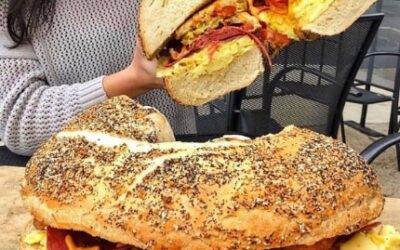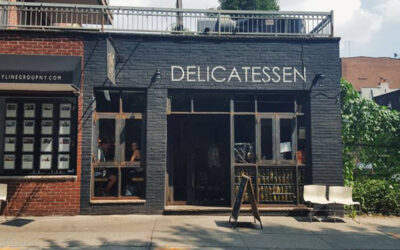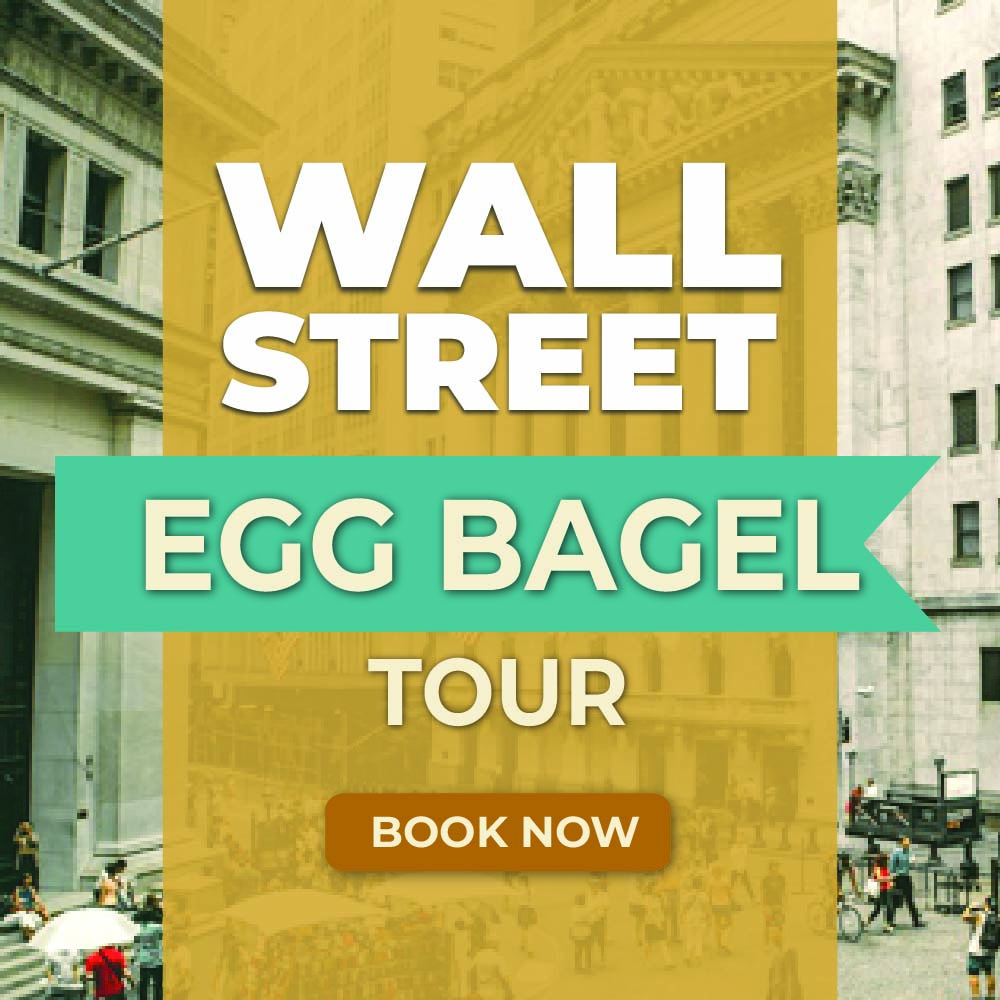Tong Wars:
Gangs of Chinatown Map
Click to Enlarge in a New Window
1.Hip Sing Headquarters
15 Pell Street
This non-descript building is the current headquarters of the over 100-year-old Hip Sing tong. Founded in San Francisco during the gold rush, the Hip Sings were brought to New York City by Laing Yue in the 1890s. Mock Duck (see 15) would eventually become their most infamous leader. The Hip Sings still control much of the vice in Chinatown through their association with gangs like the Flying Dragons. http://en.wikipedia.org/wiki/Flying_Dragons
2. Chinese Theater Massacre
5-7 Doyers
On August 7, 1905, Hip Sing headman, Mock Duck, ordered several of his boo how doy, or hitmen to go on a rampage. Led by his top gunman Sing “The Scientific Killer” Dock, they entered the Chinese theater and opened fire using exploding firecrackers to cover their gunshots. 4 On Leongs were killed.
Click to read a more detailed story on the Chinese Theater Massacre.http://infamousnewyork.com/2013/09/01/the-chinese-theater-massacre/
3. Chinatown Tunnels Entrance
5 Doyers
Back around the turn-of-the-century, Chinatown was infested with a warren of tunnels that were used for smuggling, gambling, and quick getaways from the cops. 5 Doyers Street is the last accessible vestige of this tunnel network known today as the Wing Fat Shopping arcade. Oh, and by the way, they don’t like guests.
4. First opium den in the city
13 Pell Street
Wah Kee, one of Chinatown’s first residents, set up shop here some time around 1868. On the ground floor he sold Chinese curios and exotic foods, but upstairs was where the real action was. Along with a fan-tan gambling parlor, Kee ran Chinatown’s first opium den, which was completely legal at the time.
5. Tong War Peace Treaty
7-9 Mott
Following the Chinese Theater Massacre (see 2), Chinatown was in lockdown. The bombings, shootings and hatchet murders had completely disrupted vice in the district, and Tammany Hall’s Big Tom Foley stepped in to end the bloodshed. With the help of General Sessions Judge Warren W. Foster, Foley brokered a peace, making Mott Street On Leong territory, Mott Street Hip Sing territory and Doyers Street neutral ground.
To celebrate the truce, the rival gangs headed to the swankest joint in all of turn-of-the-century Chinatown, The Port Arthur Restaurant, and proceeded to get hammered. Tom Lee (see 13) supposedly guzzled 107 mugs of rice wine at the shindig.
6. Nom Wah Tea Parlor
13 Doyers Street
In business since 1920, the Nom Wah Tea Parlor is the closest you’ll get to authentic early 20th century dim sum. The restaurant has nothing to do with crime or tongs, but if you’re touring the Bloody Angle (see 8) be sure to give the traditional eggrolls a try.
7. Mike Salter’s Saloon
12 Pell Street
One of Big Tom Foley’s chief election captains, Mike Salter ran a gang that included Jack Sirocco and Chick Tricker from this ragtime saloon named The Pelham Café. Irving Berlin worked here as a singing waiter, and under the threat of a beating, Salter forced him to write his first song, launching Berlin’s music-making career. Upstairs, Salter ran a multiple story opium den managed by Big Mike Abrams.
Click to read more about Mike Salter’s Pelham Café http://infamousnewyork.com/2013/08/12/mike-salters-pelham-cafe-birthplace-of-irving-berlin/
8. The Bloody Angle, Doyers Street
Sandwiched between Pell and Mott, Doyers Street has one of the most crooked histories in town. Neutral ground for the feuding On Leong and Hip Sing Tongs, Doyers has been the site of more than one full-scale kung-fu rumble, earning it the nickname, “The Bloody Angle.”
9. On Leong Headquarters
83-89 Mott Street
This awe-inspiring pagoda towering over Chinatown is the current headquarters of the hundred-year-old On Leong Tong. Led by Tom “The Mayor of Chinatown” Lee (see 13), the tong still presides over much of the vice in Chinatown today trough the use of gangs like the Ghost Shadows.http://en.wikipedia.org/wiki/Ghost_Shadows
10. Bow Kum Murder
17 Mott
In 1882, the United States passed the Chinese Exclusion Act, a law deliberately designed to artificially limit the number of Chinese women in America. By 1890, less than 3.6 percent of all Chinese residents of America were female, a drastic sex imbalance that would lead to many Tong wars, such as the case of Bow Kum, a Chinese slave girl purchased at auction in San Francisco for $3,000 by Hip Sing member Low Hee Tong.
After Christian missionaries freed Bow Kum from slavery, she traveled to New York and married Tchin Len, a farmer who also happened to be a member of the On Leongs. When Low Hee caught up with his expensive ex-wife, he demanded her back, the On Leongs refused, and the tongs went to war. On August 15, 1909, a Hip Sing hatchetman slipped into Len’s apartment at 15 Mott Street and hacked Bow Kum to death, instantly kicking off one the bloodiest tong struggles.
11. 5th Precinct
19 Elizabeth Street
Opened in 1882, the 5th Precinct has policed Chinatown for more than 100 years, raiding opium dens, busting up fan-tan games, and bringing justice to the tongs. Designed by NYPD sergeant and architect Nathaniel Bush, the precinct contained 12 cells for women and 16 cells for men.
12. The Death of Funny Man Ah Hoon
10 Chatham Square
During the Bow Kum War, the Hip Sing Tong posted a public death threat against the On Leong comedian Ah Hoon. Apparently Hoon’s act of skewing the Hip Sings had pissed off the gangsters for the last time. On December 30, 1909, two patrolmen from the 5th precinct protected Hoon during his act at the Chinese Theater and escorted him though the Chinatown tunnels to his home.
The cops left him with a warning not to leave his room before they left him for the night, but a thirsty Hoon ignored their warning and opened his door for a glass of water. Hip Sing gunmen waiting in the shadows opened fire killing him instantly.
13. The Mayor of Chinatown’s Home
18 Mott
People called him the Mayor of Chinatown and for good reason. Tom Lee was the headman of the On Leong Tong, controlling much of the gambling, prostitution, and opium in Chinatown. His power was so great that Tammany Hall politician Big Tom Foley made him a city sheriff. He lived here at 18 Mott Street for much of his life.
14. Wing Fat Mansion
7 Chatham Square
Built in 1920, this condominium’s lobby is the exit to the Chinatown tunnels. They really, really, do not like visitors.
15. Mock Duck Strikes Again
23 Mott Street
One of the most vicious gunmen in Chinatown, Mock Duck was a gangster known for going about the streets armed with two revolvers, a hatchet, and a suit of chain-mail armor. He was tried three times for murdering a tailor here, but he was never convicted.
16. The Big Flat
96-98 Mott Street and 9 Elizabeth Street
Demolished
The Big Flat started with the greatest of intentions. It was supposed to be a model for the future housing of the poor. Built as the first model tenement, the building was eventually devoured by the people it hoped to save, becoming one gigantic opium den. On December 8, 1884, detectives from the 5th Precinct raided the building. Fifteen people were arrested including Tom Lee’s (see 13) nephew.
If you think I’m missing a good map point that I can include, let me know!







